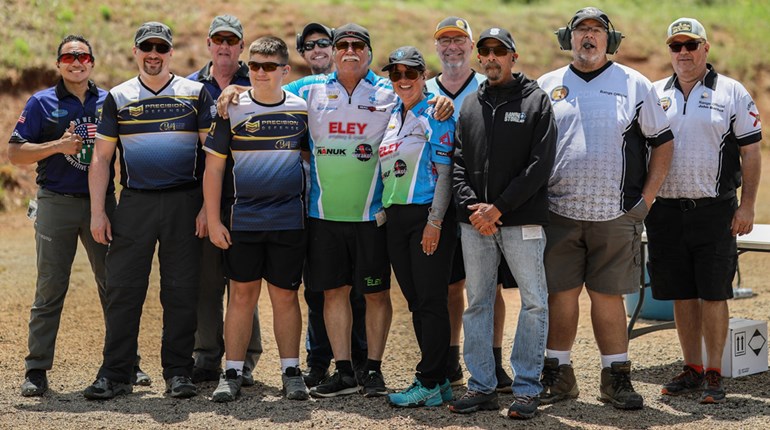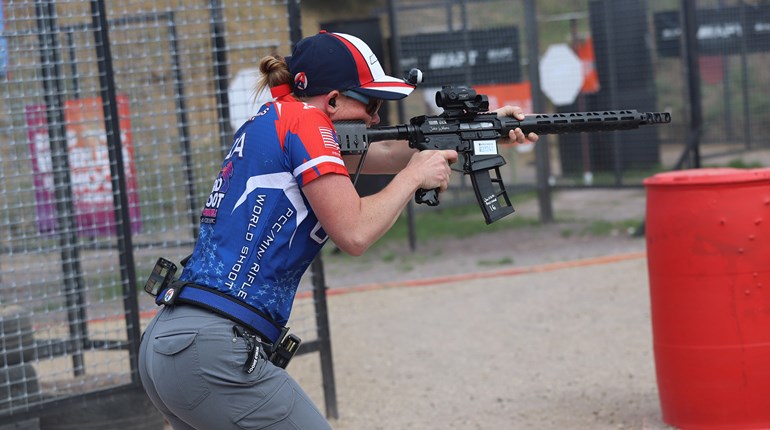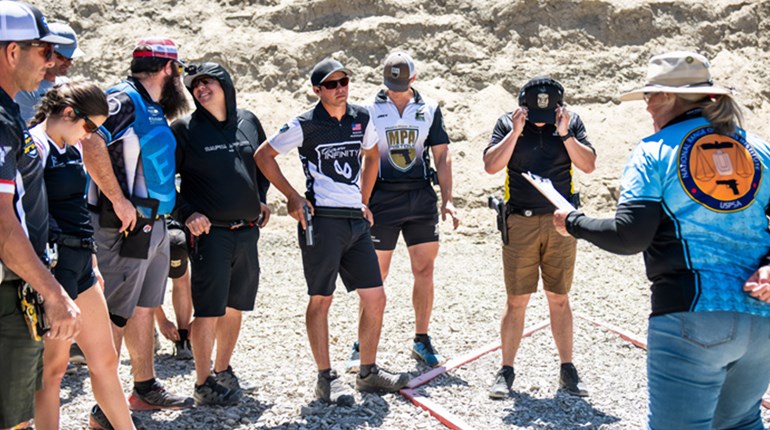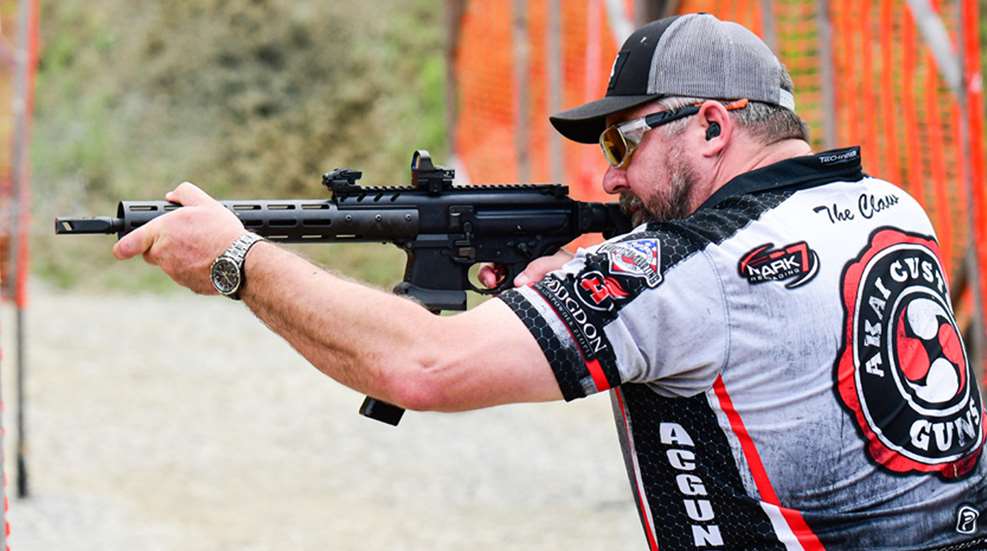
The Silver Creek Conservation Club was once again host for the Indiana SNS 400 Section Championship. Match Director Jake Martens put a challenging, fun and reasonably priced 13-stage match on the ground; this is not his first rodeo, and he did it right again. This match required 408 rounds to complete—if you didn’t miss. Long-time range master Tom Palmer was back on hand to provide solid leadership for a great crew of range officers as well as providing an objective stance for the shooters on any questions or issues that invariably arose. The Indiana SNS 400 has a reputation for well-designed and well-built stages—this year was no exception.
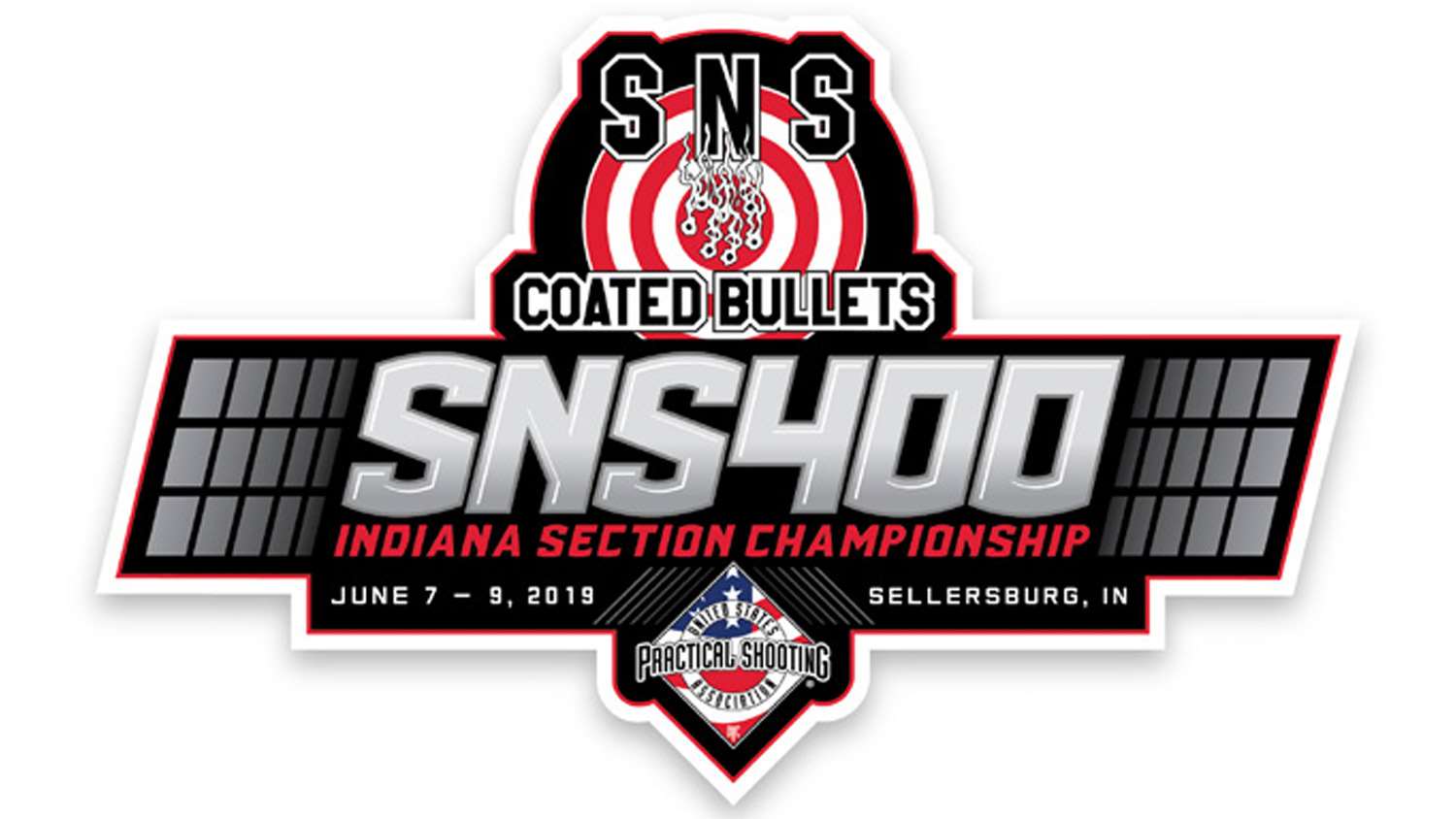
While 321 shooters were registered for the match, only 286 actually travelled to Sellersburg, IN, to test their skills and have some fun. Of those hardy souls that showed up despite the threat of wet conditions, their skills were tested and fun was had by everyone involved. The staff was mostly able to stay dry on Friday as they shot. Unfortunatley, rain fell on the shooters both Saturday and Sunday and made conditions suboptimal. Targets had to be bagged both days for at least an hour each day. Spring and summer rains have plagued the Hoosier state this year in record amounts.
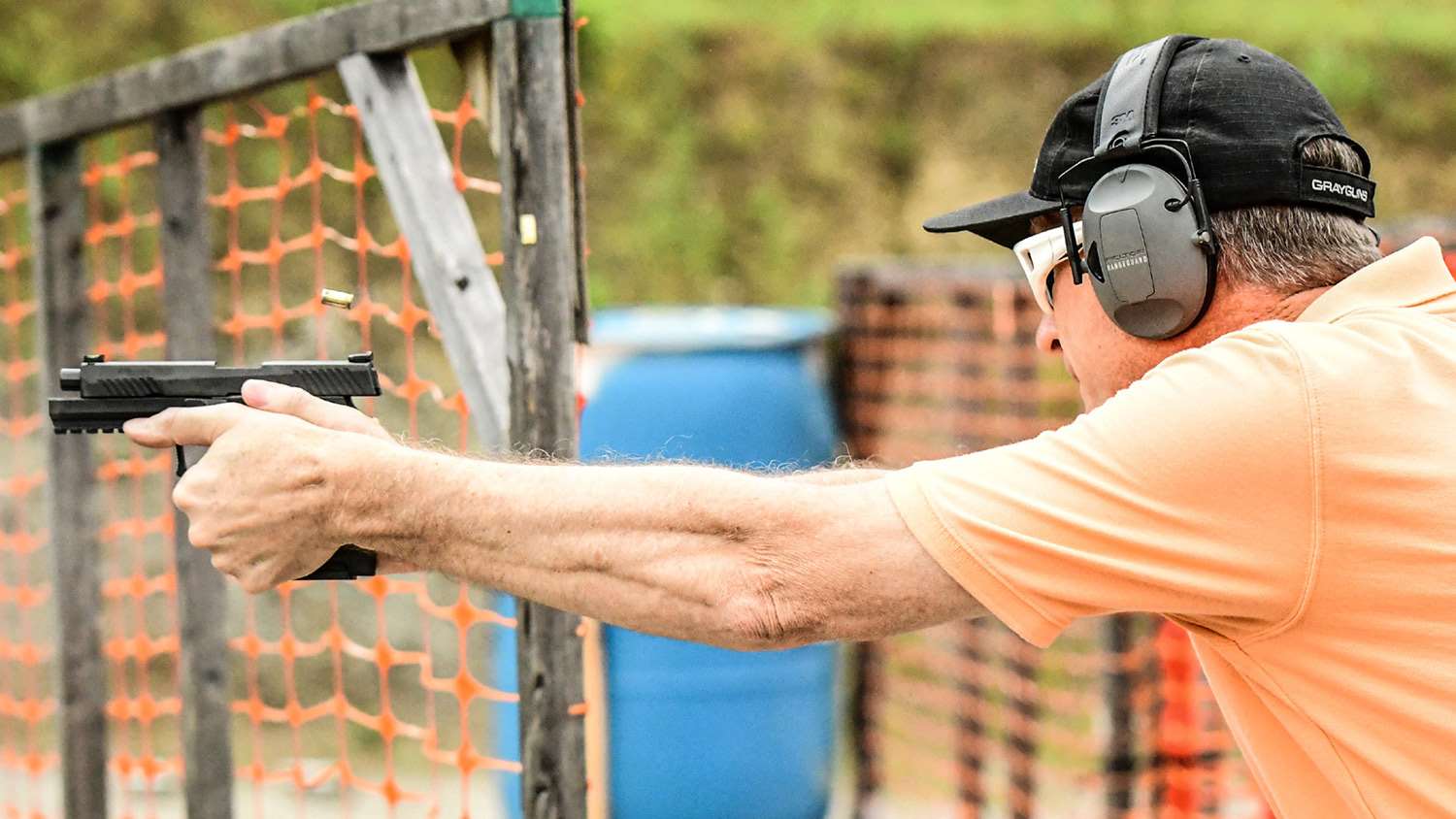
All eight USPSA divisions were represented at this match. Production was the largest with 67 people battling for the top spot, while Limited 10 was the smallest with only one person. Limited was the second most popular division with 63 folks breaking out the wide-bodied, iron sighted guns, and Revolver was the second smallest division with a duo of old school competitors slinging lead from their wheel guns. Open division boasted a roster of 54 shooters, beating out the 45 shooters in “Open on the cheap,” a.k.a. Carry Optics division. There were 19 shooters with Single Stack guns and 35 showed up PCC division.
The stalwart shooters in Production and Single Stack deserve a nod of appreciation, as this match was no picnic in the low-capacity divisions. Normally in the low-capacity divisions, if your feet are moving you need to be reloading, and this match was no exception. However, in some cases a reload needed to be done standing or only moving one unnecessary step.
The match theme was unofficially “barely legal.” During setup, there was much debate about a few of the stages and the available options. The Midwest PCC match presented by JP Enterprises had been two weeks before, and many of the walls and fault lines were used for the SNS 400. Some walls were moved, and all of the start positions changed, and some fault lines were rearranged. This was done to lighten the work load on the small, dedicated setup crew; none of the stages were the same, but some were fairly similar and some were completely changed. Opinions differ greatly on what makes a good stage, but everyone could find something that they liked in this match. If they could not find something they liked, it was probably a bitter old man shooting L-10 or perhaps Revolver. You can’t please everyone.
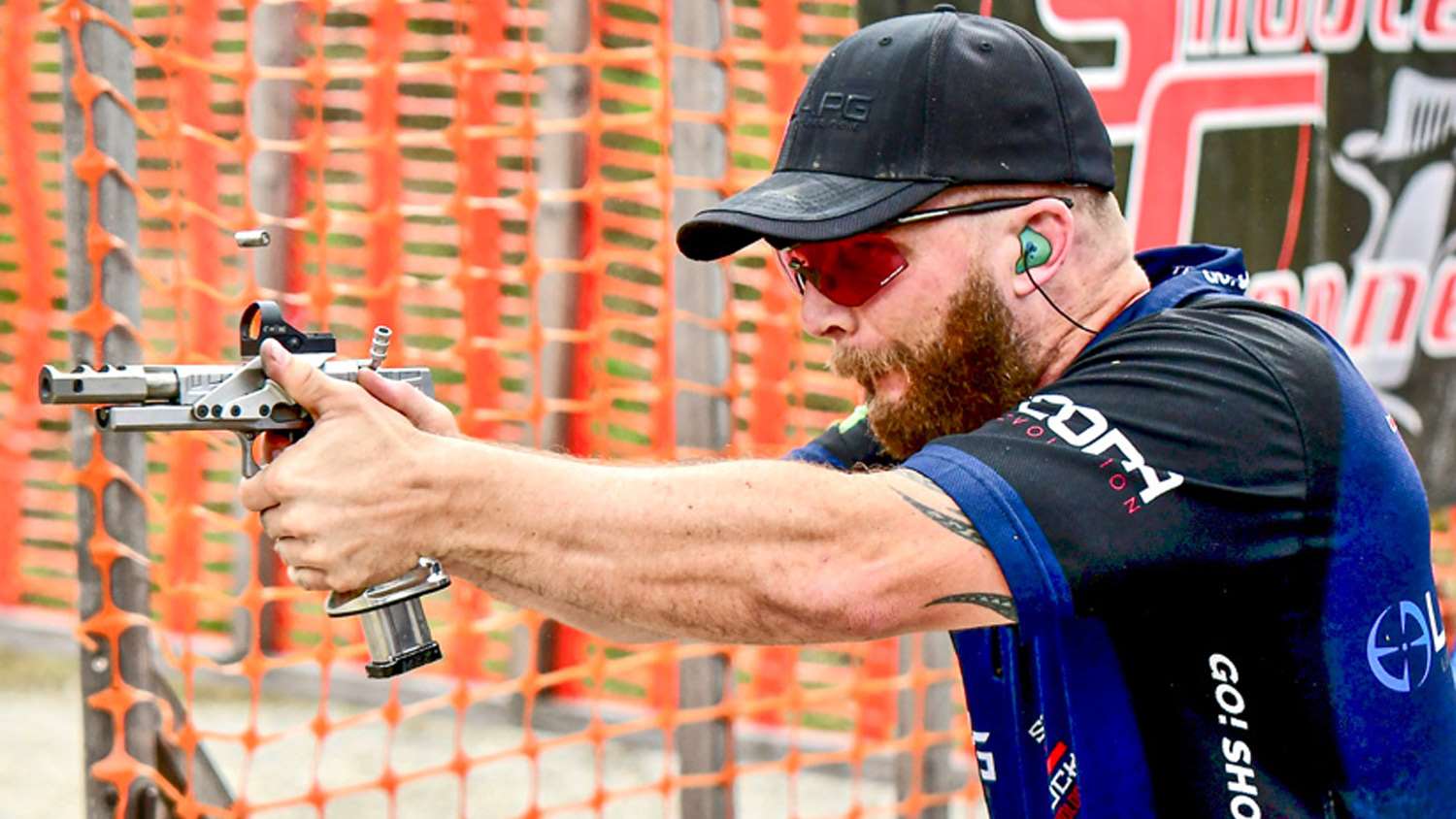
One stage from the “barely legal” category was Stage 10, Going Down Slow. I am not sure where these stages names came from but I have my own ideas about them. This one was the object of much discussion and debate during setup, and was nearly unchanged from the PCC match, except for new start position. I was not a fan of this stage during setup, or even during the walk-through, but once it was shot, I had to agree with the match director—it was a very fun stage and I am glad it remained unchanged.
This was one of the large marathon stages that required 40 rounds to complete. The stage included four pieces of steel, skunk targets, a swinger and a drop turner. Of the 40 required rounds, 32 could be taken from two positions if you had the magazine capacity. However, the other eight rounds required at least three positions to clean things up. The low-capacity divisions would be doing a standing or nearly-standing reload at the last position, even if they blew off the drop turner. Once the standing reload was accepted and the shooter just executed the plan, the stage went just fine. Some scorching fast runs were turned in by the high-capacity divisions because a lot of shooting could be done from a couple of stops. The stage win in Open was shot in 13.91 seconds and in Production the winning run was 24.25 seconds. Those times tell the tale of capacity on this stage. The no-shoots and hard cover in play throughout the stage kept it from being a hosefest.
The start position of Stage 10 was outside the shooting area, with hands on a wall. The shooter moved into the shooting area, and had to engage three targets on the right side of the stage, and then transition to the left side for three more. Uprange and on the left through a port were three targets requiring two positions to engage, with steel and a variety of targets toward the middle of the stage also available but not from one spot. Some of these targets closed as the shooter moved forward and back to the right side of the stage for the final shooting position. Two more pieces of steel were available from there, one activating a swinging target protected by steel hard cover, and the other activating a drop turner that appeared twice to the shooter. This last position also allowed for engaging two skunk targets and a couple of other static targets. The shooter just had to decide the proper order of engagement for their ability and their division, and try to execute the plan. It was a very fun stage that allowed for quite a bit of flow, even in the low-capacity divisions.
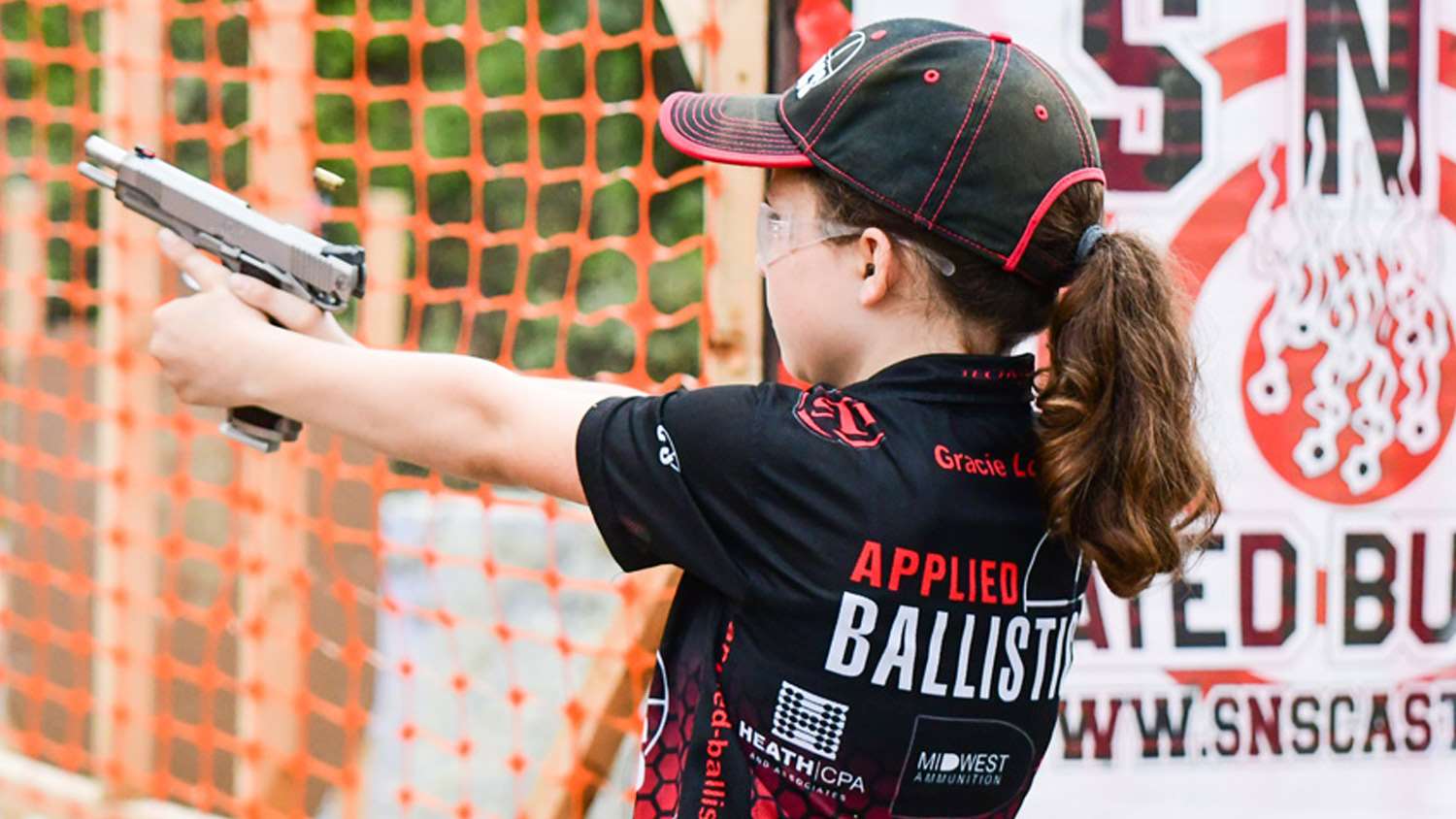
Stage 7 “Things I Used To Do” was a smaller stage, only requiring 34 rounds to complete and contained no pesky mini-poppers. Good flow and several viable options made this stage fun to shoot. The shooting area was enlarged greatly from the PCC match, but the walls and the targets were left as they were and the start position changed to a seated start. The chair had to be in the threefoot box, but the shooters were allowed to game the start to their hearts’ content as long as they were seated on the chair in the box.
In order to engage all the targets the shooter had to go to the extreme right and left side of the stage. They could advance forward of the side positions, but that would require a retreat of eight to 10 feet for the last shooting position. They could also stay at the very rear of the shooting area and simply move along the stage laterally, making four to five stops along the way. The shooting area was much narrower in the PCC match, which meant that the stage plan options were limited to either going from left to right or right to left, stopping along the way to engage targets. We changed this.
A larger shooting area allowed the shooter to advance, made shooting on the move possible, and improved the fun factor on the stage. There was talk in the stage-building phase that staying back would be faster. Many of the best shooters advanced on some of the arrays because it allowed shooting on the move; if the shooter stayed back, the target view was narrow and shooting on the move was just not possible. Another factor was that closer targets could be shot faster and more accurately than distant targets. This was a fun stage with at least three viable options for shooting, and it did not favor right-hand over left-hand shooters. Moving the fault lines drastically improved this already-good stage.
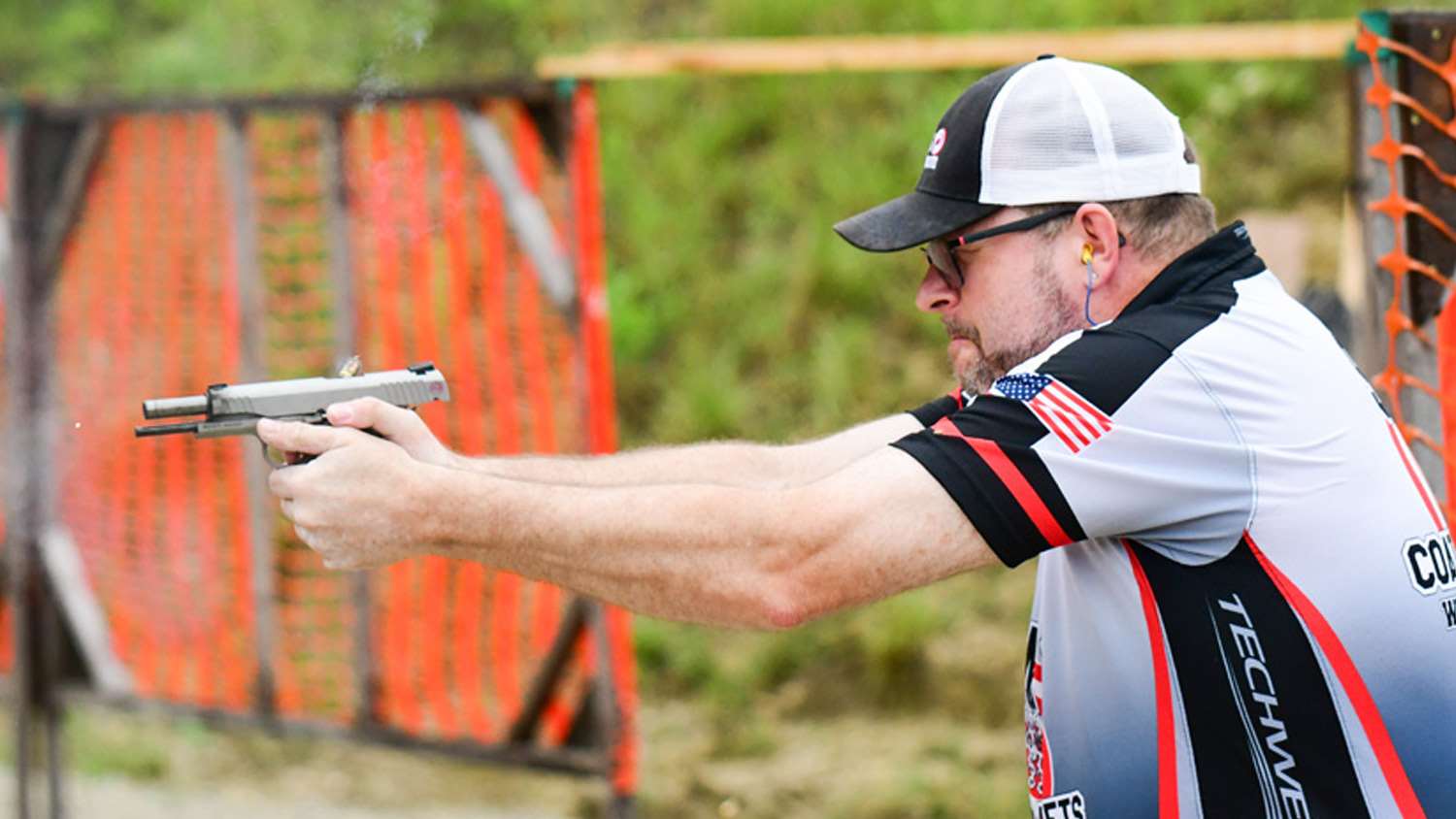
A description of the 2019 SNS 400 would be incomplete without talking about Stage 3 “Sen-Sa-Shun.” This 40-round stage required all magazines to be placed on barrels scattered throughout the shooting area and an unloaded, but holstered gun. The original start position was going to have the first magazine on one barrel and the gun on another barrel. Originally, the start was to also have the gun on a barrel, but the coming rain caused a change to starting with the gun holstered. This was a good change, eliminating knocking guns off wet barrels and extraneous movement on the stage. The sheer size of this stage, as with several other stages, made it a nice challenge. You had to hold your plan together longer and hold focus on the shooting fundamentals. Those extra challenges made Stage 3 tough, but manageable. There were so many options here that many people were not prepared to execute a plan or they struggled to remember their plan all the way through. If you want to make things difficult for a shooter, give them many viable options.
The start position was in the middle of the shooting area; it was much longer than wide, but could not be described as narrow. The shooter was going to have to retreat at some point, either the full length of the shooting area or possibly only half of it. We are all about making freestyle great again, and this stage was the epitome of freestyle, options and do what you think is best. The shooting area required three positions at the very front or near front of the stage, and two positions at the very rear, with two other required shooting positions in the middle. A number of shooters on my squad shot far more positions than were required, and some shooters shot targets more than once. Shooters had to decide to shoot targets with hard leans or engage the targets at much greater distances on Stage 3, perform several good reloads, move efficiently, and deal with a low port. Stage planning was tested significantly by this stage.
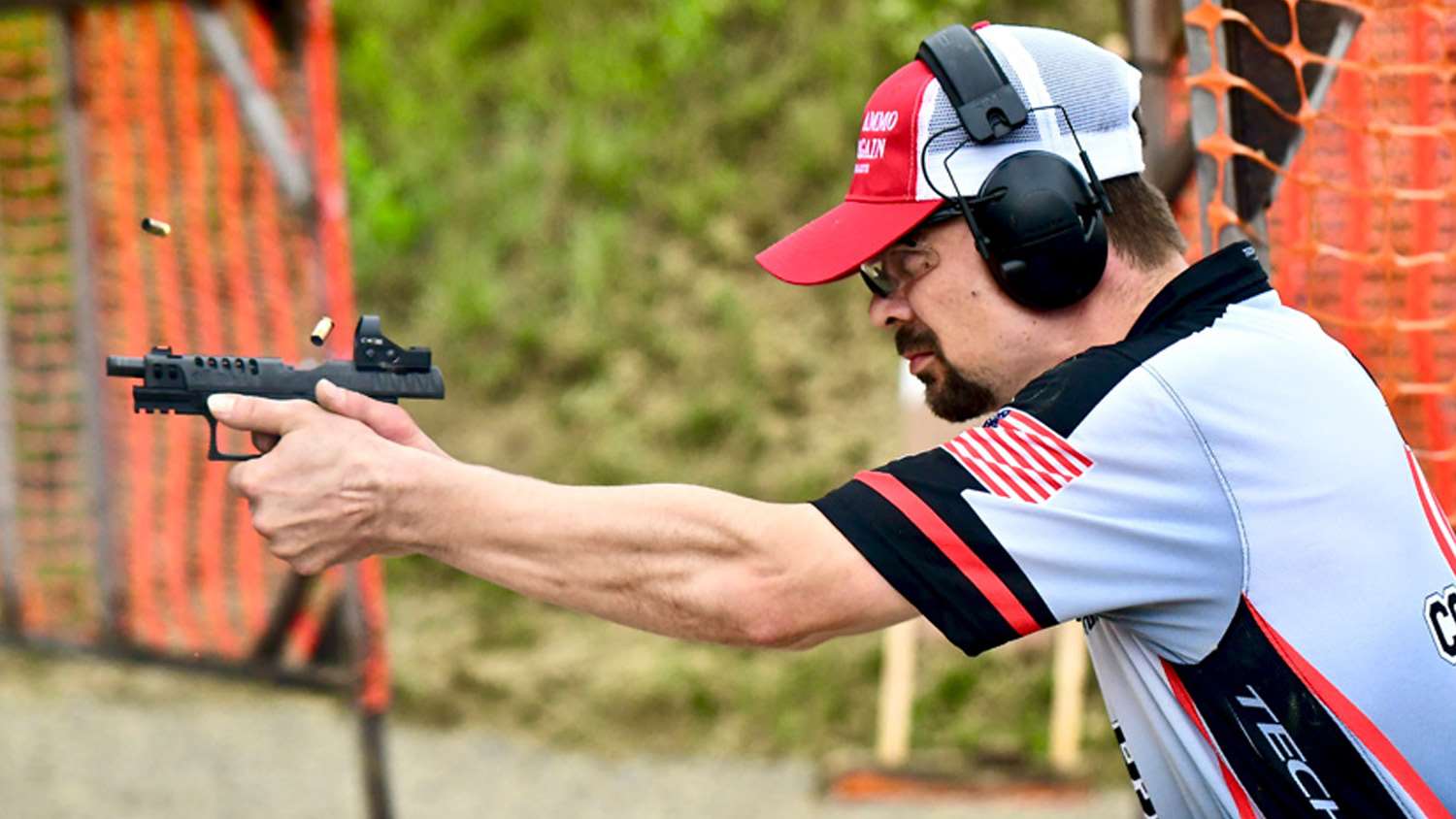
The results page for the SNS Indiana 400 shows Shannon Smith (GM Open) at the very pinnacle. As much as I admire his shooting ability, I admire his philosophy toward his fellow man even more. John Vlieger was in second place in Open with 97 percent of Shannon’s score; third place was Andrew Hyder, also in Open. The highest placing iron-sighted shooter in the match was Limited division’s Mike Gnyra in 10th place.
The winners of each recognized division will receive plaques, along with certificates for bullets from SNS Casting. The Indiana Section also recognizes the Indiana champion in each division. The Indiana section match always strives to provide great staff, good stages, high round count and a fun match for the shooters who take the time and make the effort to come to the match. The 2019 edition lived up to that tradition. The dedicated, hardworking crew that puts in the time to make this match happen deserves more than they receive. Any job associated with putting on a quality match is long on work and short on reward. The staff and crew that put this match on have my thanks and appreciation.I look forward to next year, as I am sure many of you do as well. If you have not shot the SNS 400 Indiana Section match, you should do so next year.
2019 SNS 400 Section Championship Leaderboard
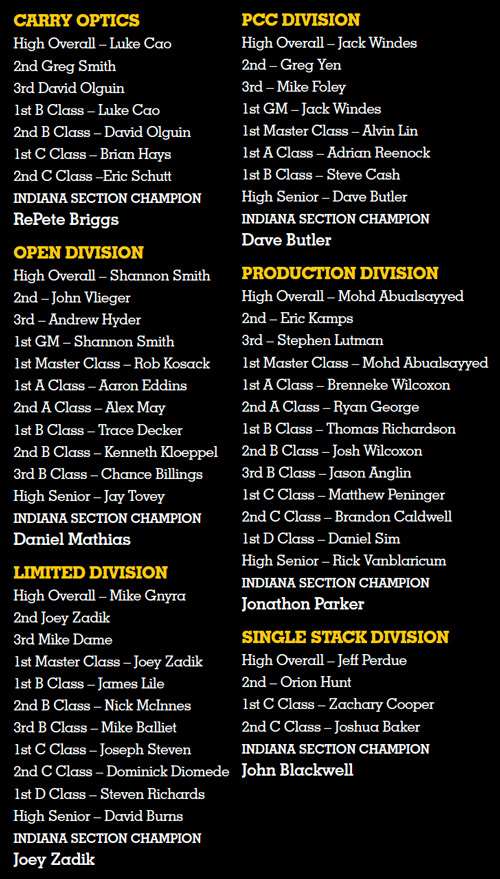
Article from the September/October 2019 issue of USPSA’s FrontSight magazine. Photos by Jake Martens.













